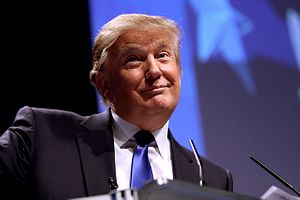With the Trump presidency just past the 100 day mark, how should we interpret the new administration’s trade policy to date, and what – if anything – can we discern about its potential direction moving forward?
A quick review of the major trade actions (and inaction) thus far reveal very much of a “mixed bag.” In some instances, candidate Trump’s tough talk on trade has materialized into policy. In other cases, not so much.
Candidate Trump talked repeatedly about designating China a currency manipulator on his first day in office. The first day came and went with no such designation, and the administration subsequently announced that China was in fact not manipulating its currency after all. During the campaign, Trump also spoke about applying punitive tariffs on “cheating” trade partners, ranging from 20 percent to 30 percent and even 45 percent for China, a primary target for his tough talk. At least so far, there has been no action on this front.
Other promises were kept. We heard time and time again on the campaign trail that Trump would withdraw from the Trans-Pacific Partnership on his first day in office, and that box has clearly been checked. President Trump did withdraw the United States from TPP as promised.
A pledge that the “disastrous” North American Free Trade Agreement (NAFTA) would either be overhauled or trashed is more complicated. While the president is moving forward with NAFTA renegotiation (after a head fake on potential withdrawal), the scope of contemplated changes appears to be relatively modest – certainly nothing that could be considered an overhaul. Tougher enforcement of U.S. trade laws was also promised, and at least from Canada’s perspective, that promise is being fulfilled. The administration recently announced the preliminary imposition of countervailing duties of up to 24 percent on Canadian softwood lumber.
Of course, perhaps the overarching theme of both candidate and President Trump’s trade rhetoric has been the need to “get tough” with China. Yet the results of the recent tete-a-tete with Chinese President Xi Jinping in Mar-a-Lago were generally interpreted as being fairly conciliatory, with the primary trade outcome being a 100-day commitment to talk more.
How should we interpret this mixed bag on trade policy?
Some would argue that we are simply seeing an almost inevitable reversion to a more conventional U.S. trade policy. According to this viewpoint, as Trump transitions from a “say anything” candidate to an actual governing president, the stubborn realities that informed the trade policies of most of his predecessors are pushing him in more conventional directions. In essence, we could be seeing a reversion to the norm. And if that’s the case, the obvious question is whether a conventional U.S. trade policy is sufficient to meet the challenges of the day.
Or is it possible that the president’s own positions are actually evolving and moderating, at least in some instances? After all, this is a president who has acknowledged that as he learns more, his views and positions can change. Will we still see some of the more draconian trade policies – such as punitive tariffs — be implemented at some point in the future, or have the president’s viewpoints actually softened?
Another possible explanation is something that most analysts (including this one) failed to foresee: the establishment of a formidable power center in the White House advocating a more moderate approach and a more typically pro-free trade point of view. This power center has emerged in the person of Gary Cohn, the former Goldman Sachs executive and current director of the National Economic Council. Cohn has reportedly faced off in fiery debates in the Oval Office with trade hard-liners such as Peter Navarro and has apparently won Trump’s confidence. His standing has not been damaged in the least bit by his seeming alliance with presidential adviser – and son-in-law – Jared Kushner.
Of course, some of the developments we’ve seen thus far might simply reflect the president’s pronounced affinity for pragmatic deal making and his property-tycoon background. After announcing that China would not be designated a currency manipulator, Trump indicated that now is not the right time for such a designation, given the fact that he is seeking Chinese cooperation on North Korea. Some kind of a “deal” may in the works, though there are questions over the wisdom of intertwining trade issues with security issues.
For Trump’s harshest critics, the obvious explanation for the mixed signals thus far on trade is the most simple one: confusion and disarray in the administration.
Which explanation is most plausible? In all probability, most if not all of these factors have come into play at different times, on different issues – producing surprisingly moderate outcomes in some cases, and “get tough” policies in other instances.
What does this suggest for U.S. trade policy moving forward? If you are a trade official sitting in the capital city of one of the United States’ largest trading partners, perhaps the safest bet might be to expect the unexpected. Indeed, predictability is probably the last thing Trump wants. Whether this will prove to be a sustainable basis upon which to conduct U.S. trade policy over the longer term, however, remains to be seen.
Stephen Olson is a Research Fellow at the Hinrich Foundation and a Visiting Scholar at the Hong Kong University of Science and Technology. Over the course of his 25 year international career, Stephen has lived and worked in Asia, the Middle East, and the United States, holding senior executive positions in the private sector, international organizations, government, and academia.
































